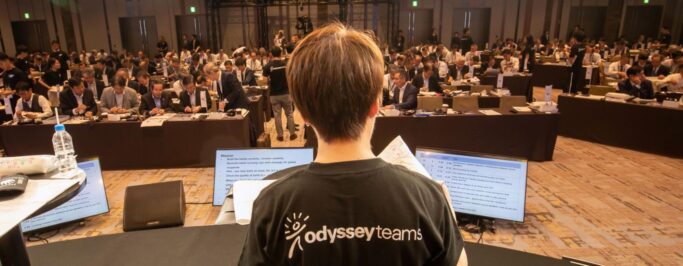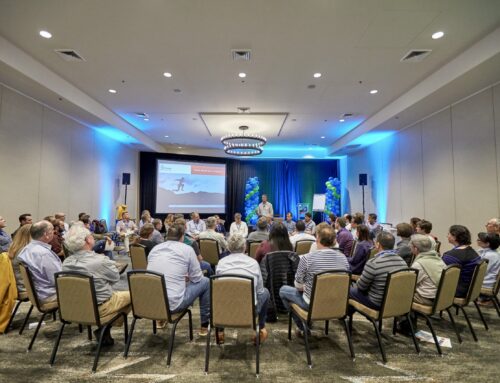Employee development plans are a great way to keep your employees motivated and on track for success. By setting goals and giving your employees the tools they need to achieve them, you can help them grow as individuals and as members of your team.
Employee development plans are an important way to support your team and boost engagement. By taking the time to map out a clear pathway for your employees, you can show them that you truly care and are committed to their success.
Additionally, employee development plans can help employees feel more connected to their work and improve overall job satisfaction. Often, employees who feel supported by their organization are more likely to be engaged in their work and more likely to stay with the company long-term.
In this blog post, we will dive deeper into the importance of creating a development plan for your employees and give three employee development plan examples that have proven to be successful in the past. We will also provide tips on how you can create a plan that works best for your team.
What is an employee development plan?

An employee development plan (EDP) is a document that clearly sets out a roadmap for an employee’s goals for their professional development. The EDP should be created in collaboration with both the employee and their supervisor, while also being reviewed on a regular basis.
The goal of the EDP is to help the employee grow and develop their skills so that they can reach their full potential within the organization. To create an effective EDP, it is important to consider the employee’s current skill set, their eventual career goals, and the resources and support that will be necessary to help them reach those goals.
EDPs can be created for employees at all levels of an organization, from entry-level employees who are just starting out to seasoned executives who are looking to take their career to the next level. No matter what stage of their career an employee is in, an EDP can help them identify areas of opportunity and map out a plan for success.
With a little planning and effort, an employee development plan can be a powerful tool for helping employees reach their full potential.
Why is an employee development plan important?

Employee development plans are important for a number of reasons. First, they help to ensure that employees have the skills and knowledge necessary to do their jobs effectively now, and so that they have a clear roadmap of how to advance forward in their career. By identifying training and development needs, employee development plans help to ensure that employees are able to keep up with changing job requirements.
In addition, a career development plan can help to improve morale and motivation, since the employee understands how their work now can benefit them in the future. When employees feel that they are being supported in their career development, they are more likely to be satisfied with their jobs and more committed to their employer.
Finally, employee development plans can help to improve retention rates. Employees who feel that their employers are investing in their development are less likely to leave for another job. This can save your company money in the long run, as it costs more to train new employees than to keep existing ones.
Additionally, a high employee retention rate can boost morale and productivity. When employees feel like they are valued and appreciated, they are more likely to work harder and be more engaged in their work. As a result, raising your employee retention rate can have a positive impact on your bottom line.
In summary, employee development plans are important tools for ensuring that employees have the skills and knowledge necessary to do their jobs effectively and for promoting morale, motivation, and retention.
Fill-in-the-blank employee development plan template
We realize every employee’s goals are unique to the individual needs and company’s needs. So with that in mind, here is a general template that you can use to fill in the blanks and create a plan that works for you.
| Employee’s Name: | [Insert employee’s name] |
| Today’s Date: | [Insert today’s date] |
| Current Title: | [Insert current job title] |
| Career Goal: | [Insert the employees long-term career goal within the company] |
| Training Needs: |
|
| Specific Steps (With Timeline): |
|
| Desired Goal Completion Date: | [Input when the goal should reasonably be accomplished] |
It’s important to periodically reevaluate goals to make sure they still align with your employee’s values and aspirations. So take some time every so often to reflect on their career goals. Is this goal still what they want? Are timelines and expectations still realistic? If not, it may be time to set some new ones.
3 Employee development plan examples.

Understanding how to develop a development roadmap can be difficult.
We’ve put together three employee development plan examples that will help you get started. Each plan is a general outline to help you get an idea of how you can tailor it to your specific situation.
Example #1
| Employee’s Name: | Jane Doe |
| Today’s Date: | 7/08/19 |
| Current Title: | Software Engineer |
| Career Goals: | Software Team Manager |
| Training Needs: |
|
| Specific Steps (With Timeline): |
|
| Desired Goal Completion Date: | Winter of 2021 |
Example #2
| Employee’s Name: | John Smith |
| Today’s Date: | 9/15/21 |
| Current Title: | Salesman |
| Career Goals: | Sales Manager |
| Training Needs: |
|
| Specific Steps (With Timeline): |
|
| Desired Goal Completion Date: | Summer of 2023 |
Example #3
| Employee’s Name: | Sallie Smith |
| Today’s Date: | 4/21/22 |
| Current Title: | New Real Estate Agent |
| Career Goals: | Top Producing Real Estate Agent |
| Training Needs: |
|
| Specific Steps (With Timeline): |
|
| Desired Goal Completion Date: | Spring of 2023 |
Tips on how to create a plan that works best for you

You know that creating a development plan for your employees is essential to the success of your company. But what’s the best way to go about it?
The answer: it depends on your specific goals and your employees’ readiness for development. By taking the time to consider both of these factors, you can create a development plan that will help your employees reach their full potential.
First, think about what you want to achieve as a company. What skills do you need your employees to have? What knowledge do you want them to gain?
Once you’ve identified your goals, take a look at your employees. What are their strengths? What areas do they need to work on? What specific actions could they take to help them achieve their career goals?
It’s a good idea to begin doing succession planning with human resource management in order to get suitable candidates lined up to replace any roles that may open up.
By matching employees with development opportunities that play to their strengths and address their weaknesses, you can ensure that everyone is making progress toward their goals. So don’t wait – start planning for employee development today. Your business will be better for it!
Odyssey Teams
Looking to build a strong team while making a positive impact on the world? Odyssey Teams can help!
We offer in-person, virtual and hybrid Corporate Social Responsibility training workshops that are perfect for organizations of all sizes. Our experienced facilitators will guide your team through fun and engaging activities that focus on important issues like sustainability, global citizenship and social responsibility.
Not only will you build a stronger team, but you’ll also be making a positive difference in the world! Contact us today to learn more.
Employee Development FAQs
Figuring out how to create employee development programs can be a daunting task.
There are a lot of questions that come up when you’re trying to create an employee development plan.
We’ve got you covered. Our FAQ section for employee development plans has the answers you need to get started. From tips on setting goals and developing training programs, to creating a timeline and measuring success, we’ll help you every step of the way.
What should you write in an employee development plan?
To get started, sit down and discuss with your employee what they want to achieve in the short-term and long-term. You should also begin to take into account all of their current skills, knowledge, and experience in order to conduct a skills gap analysis.
Once you have a good idea of the overall objectives, you can start brainstorming specific steps for them to take. For example, if they want to improve their public speaking skills, they could join a toastmasters club or volunteer to give presentations at work. If they’re looking to gain more experience in leadership, they might seek out opportunities to lead project teams or cross-functional groups.
It’s also important to set clear deadlines for when you would like the steps to be completed in order to hold everyone accountable and focused.
By taking the time to develop a well-rounded plan, you’ll set them up for success in achieving their professional goals while also being in alignment with the company’s business goals.
How do you know if an employee is meeting the goals outlined in their development plan?
There are a few key indicators that can help you tell if an employee is meeting the goals outlined in their development plan. First, take a look at their performance reviews. If they are consistently meeting or exceeding their targets, then it’s likely that they are also meeting the goals set out in their development plan.
Another good indicator is whether or not they are taking advantage of opportunities to develop their skills. If they are actively seeking out new challenges and taking on additional responsibilities, then they are probably making good progress towards meeting their development goals.
Finally, ask them how they are feeling about their progress. If they are confident and enthusiastic about their ability to meet their goals, then it’s likely that they are indeed on track. By monitoring these key indicators, you can get a good sense of whether or not an employee is meeting the goals set out in their development plan.
What should I put for goals on a performance review?
When it comes to employee performance reviews, setting goals is an essential part of the process. However, setting goals can be a challenge, so here are a few tips to get you started. First, consider what you want your employees to achieve in the short and long term.
Next, make sure that the goals you set are:
- specific
- measurable
- achievable
- relevant
- time-bound
Finally, remember to give your employees regular feedback on their progress towards meeting their goals. By following these tips, you can ensure that your employee performance reviews are effective and help your team reach its full potential.
How can you make sure everyone is on the same page?
This can be achieved by creating a clear and concise plan that outlines the goals and objectives of the organization. Once the plan is in place, it’s important to communicate it to all employees. It may also be a good idea to give each employee access to an employee development program (or career development programs) so that they can gain an understanding of what is necessary.
This will ensure that everyone understands the expectations and knows what needs to be done in order to meet their respective goals. Finally, it’s important to provide employees with regular feedback. This will help them stay on track and ensure that they are making progress toward their goals.
By following these steps, you can create an employee development plan that will help everyone in your organization reach their full potential.







Leave A Comment
You must be logged in to post a comment.